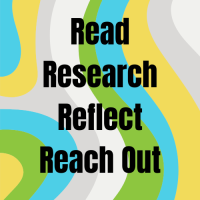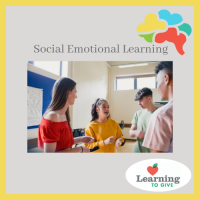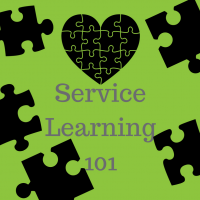In this activity by Joyce Matthews, youth explore what makes up an identity, then build a deeper understanding of how their identity impacts the community. With this Read, Research, Reflect, and Reach Out model, youth travel a journey of self-discovery that leads to service. This discovery-to-action model can be used in other contexts.
After a meaningful session or day together, a reflective writing prompt can help young people internalize, sort, or articulate their thoughts and feelings. A great tool for SEL and personal reflection, exit tickets provide a prompt to bring thoughts to a close before moving out the door. Designed to be handed to the facilitator as a "ticket" out the door, they may also be kept private if someone doesn't want to share their thoughts in the moment.
One of the most effective ways to support youth social emotional growth is with regular check-ins. Use ice breakers to give youth a chance to listen, talk, reflect, build empathy, and discuss critical thinking and issues. The following conversation prompts are organized by the SEL categories and the type of engagement they bring out.
Building a caring and inclusive classroom begins with an understanding of where students are at not just academically, but emotionally. Many students today have been exposed to experiences that affect their ability to regulate their emotions. By teaching children positive behavior and self-regulation, teachers can help improve outcomes for all students and build a caring community. This lesson will introduce students to mindful activities and the use of gratitude journals.
- Read more about Self-Regulation in the Classroom
- Log in or register to post comments
This lesson focuses on the meaning and benefits of gratitude. A book about a gratitude jar challenges us to brainstorm things they are grateful for right now. For their service project, participants 'deliver gratitude' to others in the school community by saying "thank you" and observing the reactions of the person they thanked, as well as how they feel. They will keep a gratitude jar and add to it each day; they may look at their entries on tough days. They may add to others' jars with kind words.
- Read more about Deliver Gratitude Day (K-5)
- Log in or register to post comments
Do This With Your Students
Note: After going through the whole course once on your own, come back to the "Do this with your students" part at the top of each of the six sections, then reflect at the bottom of each section on the student actions and conversations.
- Read more about Part V: Reflection
- 1 comment
- Log in or register to post comments
Learning and action through service-learning give youth purpose to "do well and do good" because they see what they do matters and creates real solutions. This teaching and learning tool cultivates a caring community and prepares young people for responsible civic engagement, as well as college...
To reflect on what students learned from this philanthropy class and to gather their feedback on the class experience.
- Read more about Reflection Jeopardy and Wrap-Up
- Log in or register to post comments



